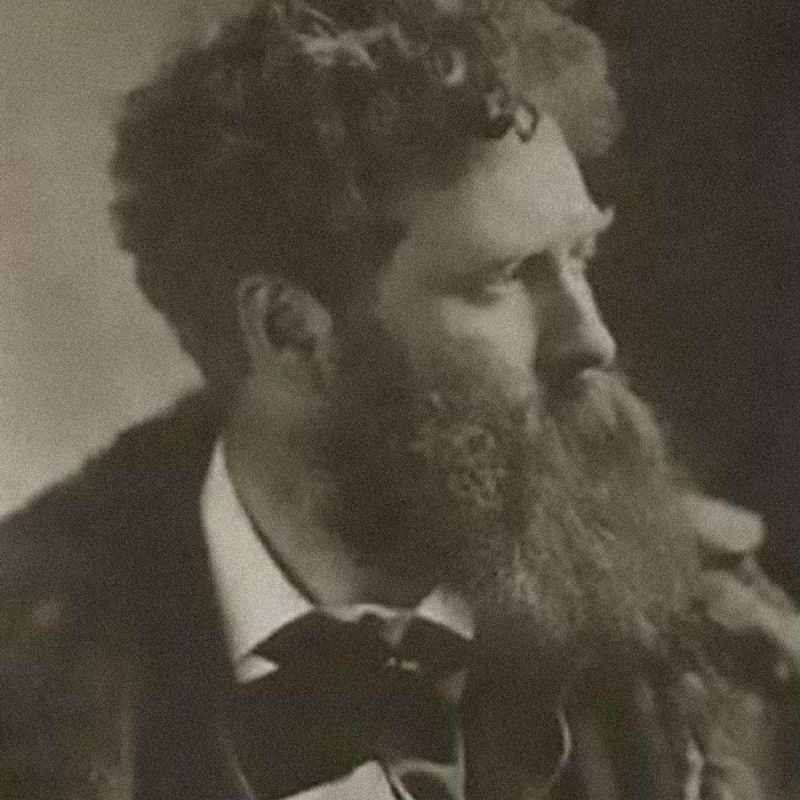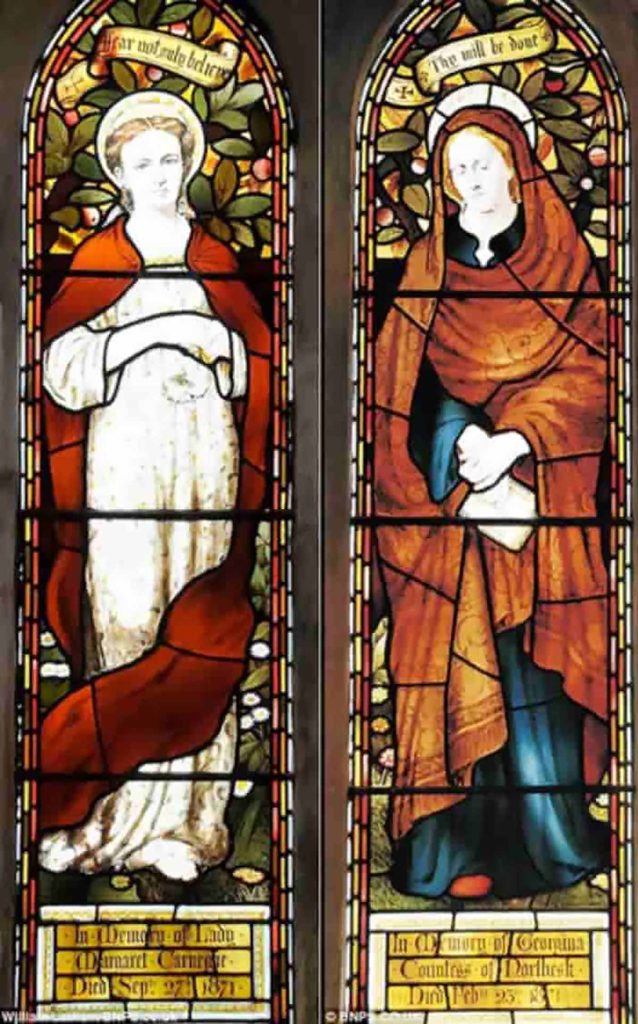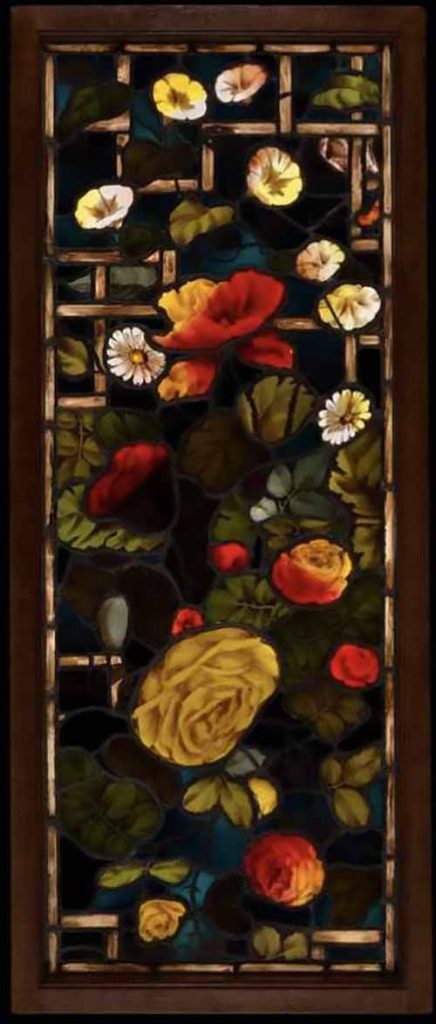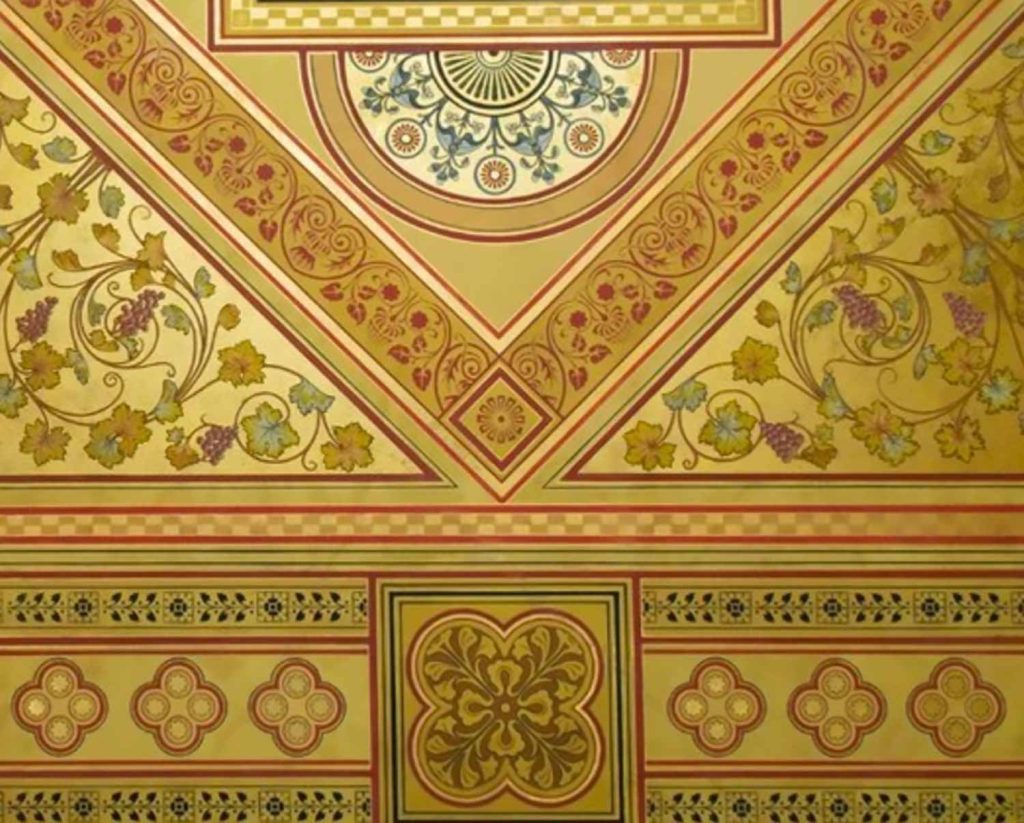Cottiers in Glasgow’s West End contains a unique interior of stained glass and decoration by Daniel Cottier.
Daniel Cottier (1838–1891) was a Scottish artist and designer in stained glass, interior decoration, furniture and ceramics as well as an art dealer and collector. He is recognised as an important International figure whose work, enterprise and influence in his own lifetime extended across several continents.

Born in 1838 Anderston in Glasgow, from a sea-faring family that originated in the Isle of Man, his training in stained glass and decorative trades led him to London where he absorbed the influences of John Ruskin, William Morris and the Pre-Raphaelites.
Returning to Scotland in 1862, he rapidly rose to prominence by forming connections with a number of leading architects including Alexander Thomson and the young William Leiper.
William Leiper’s first solo commission was to design Dowanhill Church in Glasgow and in this work he collaborated with Cottier to evolve a bold scheme of interior decoration, stained glass and decorated furniture expressing a wide range of influences, Classical Greek, Gothic, Egyptian, Assyrian and Japanese.
In 1869 Cottier moved to London to set up his business Cottier & Co which within four years he had extended to New York and was supplyingdesigns to Australia where he partnered with John Lamb Lyon, a fellow apprentice who had emigrated there in 1861.
This expansion did not prevent Cottier from continuing to be extremely active in Scotland, most frequently in the interiors of commissions undertaken by William Leiper.
Cottier’s gift for discovering and engaging designers to carry out his ideas and his shrewd business mind underpin the success he achieved in Scotland, Europe, USA and Australia in the years up to 1891 when he was to die of heart failure on a trip to Jacksonville, Florida.
By that time he had exerted a formidable influence on artistic tastes within each of the countries where he had been active.
Cottier forged his reputation in the country of his birth, Scotland and despite his travels and business interests in other places, he retained close connections throughout his life both with the country and with his fellow Scottish designers.
Aberdeen, Edinburgh and Glasgow provided many commissions in the early stages of Cottier’s career.
Of the church schemes, architect William Leiper’s Dowanhill Church, now Cottiers, is the principal survivor from the early years. Further information on Leiper and the restoration of Dowanhill Church can be found here.
William Leiper’s domestic commissions provided many opportunities for Cottier in Scotland and his studio supplied stained glass, furniture, schemes of decoration and ceramic tiles and other fittings, representative of the the Aesthetic Movement.
This Movement, emerging as it did from England, had Cottier as one of its main leaders, exponents and exporters, along with many other exceptional Scottish designers of the period.
The decorative and design work that started in the 1860s set the scene for the next generation of designers and craft workers who became associated with the Glasgow Style.


By establishing his firm Cottier & Co in London in 1869 Cottier became part of a movement that became known as the Aesthetic Movement, represented by several prominent individuals such as the painter James McNeill Whistler and the poet and playwright Oscar Wilde.
Cottier’s London business address was to be at 8 Pall Mall and his house was on Regent’s Park. London was an ideal base from which to travel to Europe for this successful entrepreneur with an interest in the art market particularly the Dutch Realists and the French Barbazon School.
Cottier recruited a young Dutch professional art dealer Elbert Jan Van Wisselingh who was also a friend of Theo and Vincent Van Gogh to manage his London gallery.
Another Dutch artist Matthew Maris, one of three brothers who produced high quality easel paintings, was recruited by Cottier who persuaded him to come and work in his London shop and gave him lodgings in his London house.
Vincent Van Gogh visited Van Wisselingh at Cottier’s London premises and wrote to his brother praising sketches for two stained glass windows he had seen there. Recently these windows have been identified in a Hampshire church and the story behind them has been researched by Cottier expert Max Donnelly for an article in the Burlington Magazine.
Interest in European art and taste was advancing in the USA after the American Civil War and Daniel Cottier saw the opportunity to extend his business and promote his aesthetic ideas. The Cottier Gallery in New York opened in 1873 after ‘an uphill fight’.
Cottier’s 5th Avenue address became a focus for artists and collectors as well as providing all manner of interior fittings and furnishings either imported from Europe or manufactured locally in Cottiers workshops.
American artists that Cottier associated with and encouraged included Louis Comfort Tiffany, John La Farge, Olin Warner and Albert Pinkham Ryder.
Daniel Cottier became a leading figure in America’s ‘Gilded Age’ and his role as the ‘Pioneer of Aestheticism’ on the continent is increasingly recognised.
New York’s Metropolitan Museum has acquired several significant works and the one illustrated here is a recent acquisition. An article about this window and its relationship to others produced by Cottier and Co can be found here.



Cottier’s role in his Australian business was as a supplier of designs for stained glass and decoration together with sending the men who had the skills to execute these designs. Cottier visited Australia on at least one occasion but his partner there, John Lamb Lyon, was the main figure.
The firm they formed in 1873 was Lyon, Cottier & Co. It rapidly became the leading provider of fine decoration and glass in Sydney with a branch in Melbourne. Both cities were developing fast with good quality architecture and had the wealth to commission elaborate interior schemes especially when these were reflective of the latest styles from London.
Important schemes like the one illustrated survive to this day including those executed by Cottier’s principal assistant Andrew Wells who became a partner in the firm between 1886 and 1897 when he returned to Glasgow.
On returning to Glasgow Andrew Wells formed his own partnership with J & W Guthrie. Guthrie and Wells became one of the most prominent firms employing and being employed by leading designers of the Glasgow Style including Charles Rennie Mackintosh.
Publications about Daniel Cottier (1838-91) start with ‘Collection Cottier’. After his death in 1891 Cottier had left an enviable collection of the French and Dutch art from the mid 19 Century that he specialised in and championed. He suffered from repeated health attacks having contracted rheumatic fever in Aberdeen earlier in his career and this made him incapable of insurance. His collection was the financial legacy by which he provided for his family and the sale of his collection was celebrated in a finely presented catalogue in 1892. The catalogue contains his portrait by the artist William Hole and a memorial of his life, character and career by the famous poet William Ernest Henley.
This however was not to be followed by any notable documentation of his achievements. On the contrary, perhaps due to the diversity of his work and the widespread nature of his influence he was not really studied at all except to feature in references to his stained glass in certain buildings or in the provenance of painting that had passed through his hands.
As a result it was not until 1969 that the work of art historians began to touch upon his contribution. This was initially through the Van Gogh connection and took the form of an article by Brian Gould “Two Van Gogh Contacts: E J Wisselingh, Art Dealer; Daniel Cottier, Glass Painter and Decorator”. Further research started to re-establish Cottier’s reputation. Martin Harrison’s “Victorian Stained Glass” published in 1980 identified Cottier’s place within that genre and Michael Donnelly’s subsequent “Glasgow Stained Glass, A Preliminary Study” 1981 became a touchstone by which Cottier’s influence in the field could start to be measured.
At the same time Cottier’s role in the cultural traditions of the other countries was independently starting to be recognised by researchers. In 1977 Mark Girouard identified the role Cottier played as a pioneer of the Aesthetic Movement in USA. In 1987 “In Search of Daniel Cottier: Artistic Entrepreneur”, a thesis for the City University of New York by Margaret Hobler explored Cottier’s influential role in the ‘Gilded Age’. In the same period Donald Ellsmore was drawing attention to the influence of Cottier and other associated Scottish decorators in the houses and commercial buildings of Sydney and Melbourne, Australia.
Between 1990 and 2010 research papers about Cottier began to appear more frequently and 2011 saw the publication of “Cottiers in Context” by Juliet Kinchin, Hilary Macartney and David Robertson, which explores among other things the important relationship Cottier forged with his contemporary Scottish architects in particular William Leiper.
Several interesting and more recent articles can be found online for example: Daniel Cottier’s Aesthetic of Beauty in Australia by Andrew Montana 2018 and New Discoveries at the Met by Alice Cooney Frelinghuysen 2020
Finally 2021 sees the publication at long last of a definitive monograph on Cottier, one that has been made possible due to a collaboration between scholars across the several geographic regions where he left his indelible mark. This is a Yale University Publication: “Daniel Cottier, Designer, Decorator, Dealer” by Petra ten-Doesschate, Max Donnelly, Andrew Montana and Suzanne Veldink.